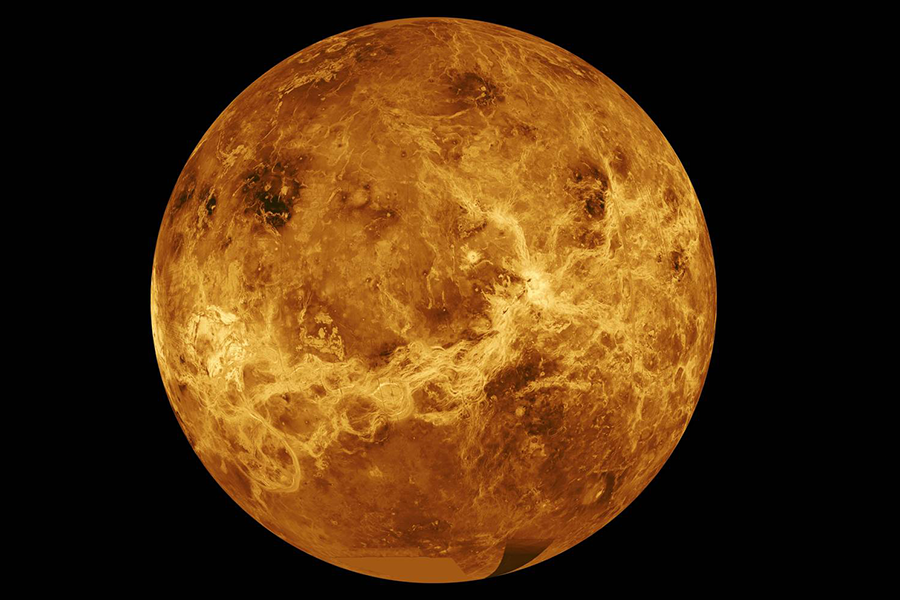What could Japan's Venus probe tell us about Earth?
A Japanese spacecraft failed in its mission five years ago, but it is now getting a second chance.
Japanese scientists maneuvered the probe Monday to make a second attempt at entering Venus' orbit. If they are successful, the probe could soon begin sending new data back to Earth revealing details about why Venus, a planet similar in many ways to Earth, is so inhospitable.
The probe may now be orbiting the planet sometimes called Earth's twin, but the scientists have yet to confirm its success.
"The orbiter is now in good health. We are currently measuring and calculating its orbit after the operation. It will take a few days to estimate the orbit, thus we will announce the operation result once it is determined," the Japan Aerospace Exploration Agency (JAXA) said in a statement Monday.
The Akatsuki probe, which means "dawn" in Japanese, launched in May 2010 with the goal of studying Venus' hostile atmosphere. But when the JAXA scientists attempted to enter the orbit of Venus in December of that year, engine failure sent the probe spiraling off course.
Why study Venus? Clues about Venus could tell us much about our own planet.
"In so many ways, Venus is similar to Earth. It has about the same mass, is approximately the same distance from the sun, and is made of the same basic materials," Takeshi Imamura, project scientist for Akatsuki, said in NASA a news release August 2010. "Yet the two worlds ended up so different. We want to know why."
Venus is the second planet from the Sun, and although it is a bit closer to our star than Earth, the planet is significantly hotter. In fact, no other planet in our solar system is hotter.
Much like Earth's greenhouse gas effect, Venus' atmosphere traps heat to warm the surface of the planet. But something about Venus' atmosphere makes the effect much more extreme. Temperatures on the second planet can reach 870 degrees Fahrenheit, which is hot enough to melt lead.
The NASA explains just how inhospitable Venus is: "The planet's 96% carbon dioxide atmosphere is thick and steamy with a corrosive mist of sulfuric acid floating through it. The terrain is forbidding, strewn with craters and volcanic calderas – and bone dry."
Akatsuki's original mission was to search for clues about how Venus became so dramatically different from Earth, and if a similar extreme event could transform climate conditions on Earth.
"By comparing Venus's unique meteorology to Earth's, we'll learn more about the universal principles of meteorology and improve the climate models we use to predict our planet's future," Imamura said.
The weather on Venus is much more dramatic than on Earth. Winds reaching over 220 miles per hour whip around the planet. The atmosphere is filled with storms and sulfuric acid clouds. Lightning crackles down from the sky to the hot, arid planet.
Akatsuki's goal was to record data from both the atmosphere and processes occurring on the surface of the planet. It appears it may be in position now to fulfill that mission.
What happened in 2010? The probe spun off course following engine failure. As The Christian Science Monitor's Kelsey Warner writes:
A spike in temperature to its main engine, believed to be caused by a choked fuel valve, caused the probe to spin and veer off course, and the space agency missed, by a matter of minutes, the opportunity to put its spacecraft in Venus orbit.
For a time, JAXA scientists had a functioning spacecraft with five cameras aboard careening uselessly through space. Until now. Five years later, the probe has come Venus’s way again, and this time, the space agency is ready: Akatsuki executed its backup plan on Sunday, and now the space agency is waiting for data from the probe to show if that plan actually worked.
...
Even though the main engine is damaged, JAXA realized it could still rely on its working maneuvering thrusters to reach orbit. Yesterday, five years to the day after it missed, Akatsuki fired up four of its Reaction Control System thrusters for 20 minutes, enough time to get into orbital position, and the longest burn ever conducted by the vehicle’s small thrusters, Space.com reports. While the maneuvers appear to have done no harm to the probe, it will be another couple of days before JAXA has data to tell if Akatsuki is actually in orbit.







